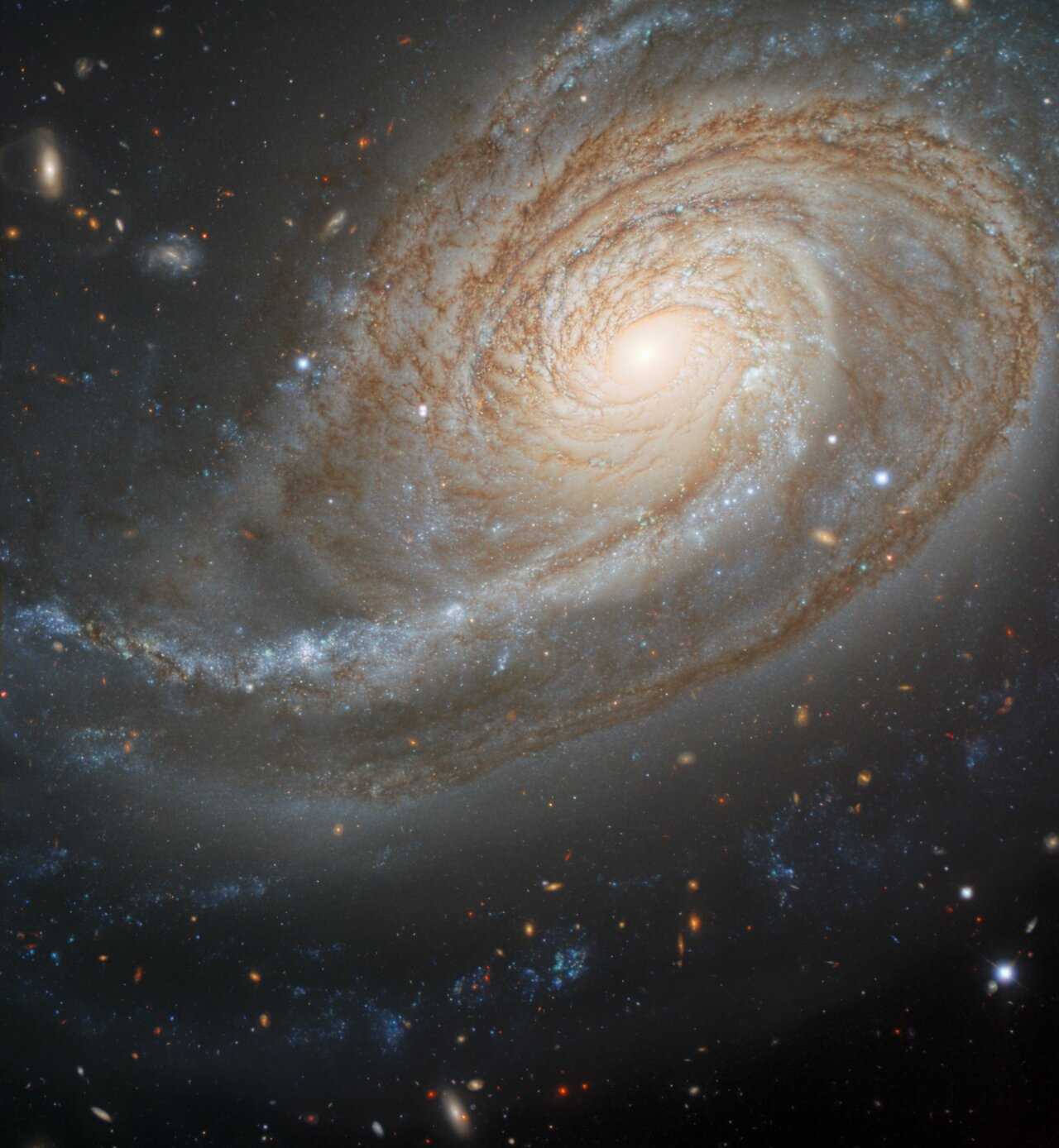This lopsided galaxy has one seriously pumped-up arm (photo)
A galaxy's overdeveloped spiral arm dominates the foreground of a stunning new image from the Gemini Observatory in Hawaii.
The image captures a lopsided spiral galaxy known as NGC 772, which lies over 100 million light-years from Earth in the constellation Aries. The photograph was taken by the Gemini North telescope, located near the summit of Mauna Kea in Hawaii and operated by the National Science Foundation's National Optical-Infrared Astronomy Research Laboratory (NOIRLab).
One of the galaxy's spiral arms appears extra large, due to tidal interactions with its "unruly" neighbor, a dwarf elliptical galaxy called NGC 770. These tidal interactions, caused by differences in the objects' gravitational field strength, have distorted and stretched one of NGC 772's spiral arms, giving the galaxy a lopsided appearance, according to a statement from the NOIRLab.
Related: The best Hubble Space Telescope images of all time!

NGC 772's overdeveloped spiral arm stretches across the foreground of the new image, toward the left-hand edge of the frame. The image shows that this peculiar galaxy lacks the bright central bar — a large, linear structure composed of gas, dust and stars — that most other spiral galaxies like our Milky Way and Andromeda exhibit. As a result, NGC 772's spiral arms sprout directly from the bright center of the galaxy.
Due to NGC 772's unusual appearance, the galaxy was included the Atlas of Peculiar Galaxies, which is a 1966 collection by astronomer Halton Arp capturing 338 weird and wonderful galaxies populating the universe. The galaxies in this catalog boast odd structures, like trailing tidal tails, rings, jets, detached segments or other idiosyncrasies.
In addition to NGC 772's pumped-up arm, the new image captures a number of galaxies lurking in the background. NOIRLab shared the new image on March 22.
Get the Space.com Newsletter
Breaking space news, the latest updates on rocket launches, skywatching events and more!
"The bright smears and smudges littering this image are distant galaxies — some of the closer examples can be resolved into characteristic spiral shapes," NOIRLab personnel wrote in the statement. "Every direction on the sky that astronomers have pointed telescopes toward contains a rich carpet of galaxies, with an estimated 2 trillion galaxies in total in our observable universe."
Follow Samantha Mathewson @Sam_Ashley13. Follow us on Twitter @Spacedotcom and on Facebook.
Join our Space Forums to keep talking space on the latest missions, night sky and more! And if you have a news tip, correction or comment, let us know at: community@space.com.

Samantha Mathewson joined Space.com as an intern in the summer of 2016. She received a B.A. in Journalism and Environmental Science at the University of New Haven, in Connecticut. Previously, her work has been published in Nature World News. When not writing or reading about science, Samantha enjoys traveling to new places and taking photos! You can follow her on Twitter @Sam_Ashley13.









